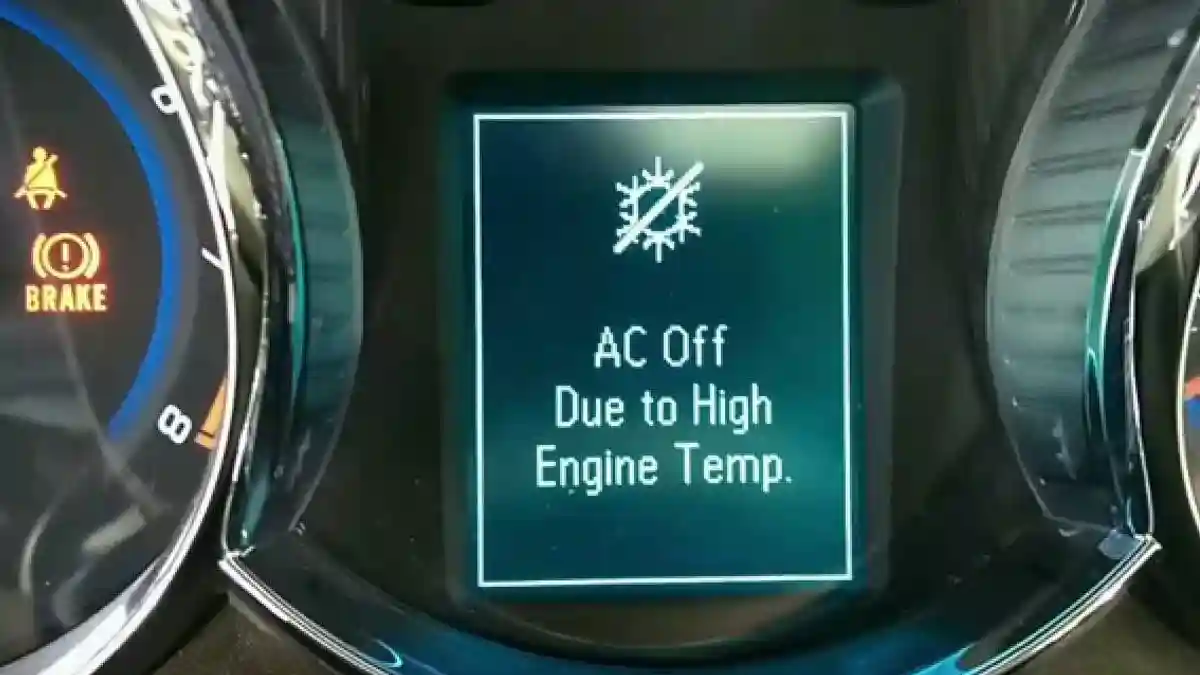How To Fix Ac Off Due To High Engine Temp

Modern vehicles are designed with sophisticated systems to protect themselves from damage. One such system is the automatic shut-off of the air conditioning (AC) when the engine temperature rises to a dangerous level. This is a critical safety feature, but it can be frustrating when you're stuck in traffic on a hot day. Understanding why this happens and how to address it can save you from costly repairs down the line.
Understanding the AC Cut-Off
The primary reason your AC shuts off when the engine overheats is to reduce the load on the engine. The AC compressor puts a significant strain on the engine, and if the engine is already struggling with high temperatures, the added load could cause it to overheat even further, potentially leading to engine damage. This is a built-in safety mechanism designed to protect your engine.
Common Symptoms
- AC blows cold initially, then stops blowing cold air.
- Temperature gauge rises above normal operating range.
- Warning lights illuminate on the dashboard (e.g., check engine light, temperature warning light).
- Engine may feel sluggish or underpowered.
- You might hear the cooling fan running at high speed continuously.
Troubleshooting the Issue
Identifying the root cause of the overheating is crucial. Here's a step-by-step troubleshooting guide:
1. Check the Coolant Level
Problem: Low coolant is the most common cause of overheating. Coolant absorbs heat from the engine and dissipates it through the radiator.
Solution: Check the coolant level in the coolant reservoir when the engine is cool. If it's low, add the appropriate type of coolant (refer to your owner's manual). Never open the radiator cap when the engine is hot, as this can result in severe burns. For example, many older Honda Civics are prone to coolant leaks from hoses and the radiator itself.
2. Inspect the Radiator and Cooling Fan
Problem: A clogged radiator or a faulty cooling fan can prevent proper heat dissipation.
Solution: Visually inspect the radiator for debris (leaves, bugs, etc.) blocking the fins. Clean the radiator with a soft brush and water. Check if the cooling fan is operating correctly when the engine is hot. If the fan isn't running or is running intermittently, it could be a faulty fan motor, a bad relay, or a temperature sensor issue. Many Ford F-150 models experience cooling fan problems due to worn-out fan clutches, especially in high-mileage vehicles.
3. Check the Thermostat
Problem: A stuck-closed thermostat can prevent coolant from circulating through the engine, leading to rapid overheating.
Solution: The thermostat regulates coolant flow to maintain optimal engine temperature. A failing thermostat may not open, preventing coolant from reaching the radiator. This usually requires professional diagnosis and replacement. On many Toyota Camrys, a common sign of a failing thermostat is fluctuating temperature gauge readings and the AC cutting out intermittently.
4. Inspect the Water Pump
Problem: A faulty water pump can't circulate coolant effectively.
Solution: The water pump is responsible for circulating coolant throughout the engine. If it's failing, it won't pump coolant effectively, leading to overheating. Look for signs of leakage from the water pump area or unusual noises. A mechanic can test the water pump's efficiency. Water pump failure is common in older Chevrolet Silverados, often indicated by a whining noise coming from the front of the engine.
5. Check for a Blown Head Gasket
Problem: A blown head gasket can allow combustion gases to enter the coolant system, causing overheating.
Solution: This is a more serious issue. Symptoms include white smoke from the exhaust, coolant loss with no visible leaks, and milky-looking oil. A compression test or a block test can help diagnose a blown head gasket. This repair requires significant engine work. Subaru engines, particularly the 2.5L engines, are known for head gasket issues.
6. AC System Issues
Problem: Sometimes, a failing AC compressor can cause excessive engine load, leading to overheating, especially on older cars with less efficient cooling systems.
Solution: Have the AC system inspected by a qualified technician. Issues like a seized compressor can put a massive strain on the engine. This is relatively rare as the AC is cut-off automatically, but it's worth considering if all other overheating issues are resolved.
Real-World Examples
- Honda Civic (2006-2011): Prone to coolant leaks from radiator hoses and the water pump, leading to overheating and AC shut-off. Regularly inspect and replace hoses as needed.
- Ford F-150 (2004-2008): Cooling fan clutch failure is common, especially in hot climates, causing insufficient cooling and AC cut-off.
- Toyota Camry (2007-2011): Thermostat issues can cause fluctuating temperatures and AC problems.
- Subaru Outback (2000-2010): Head gasket failure is a well-known issue, leading to severe overheating and potential engine damage.
Preventative Maintenance
The best way to avoid AC cut-off due to overheating is to perform regular maintenance:
- Regular Coolant Flushes: Follow the manufacturer's recommended intervals for coolant flushes to prevent corrosion and buildup in the cooling system.
- Hose Inspections: Regularly inspect coolant hoses for cracks, leaks, or swelling. Replace them as needed.
- Radiator Cleaning: Keep the radiator free from debris to ensure proper airflow.
- Thermostat Replacement: Replace the thermostat as part of routine maintenance, typically every 50,000-75,000 miles.
- Water Pump Inspection: Have the water pump inspected for leaks or wear during routine maintenance.
- Professional AC Service: Schedule regular AC service to ensure proper refrigerant levels and compressor efficiency.
By staying proactive with maintenance, you can significantly reduce the risk of overheating and keep your AC running smoothly, even on the hottest days. Regular maintenance is cheaper than major repairs. Ignoring warning signs can lead to catastrophic engine damage.
